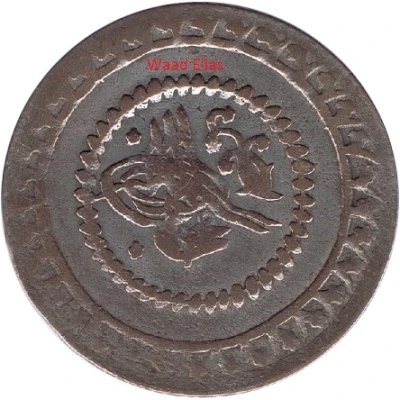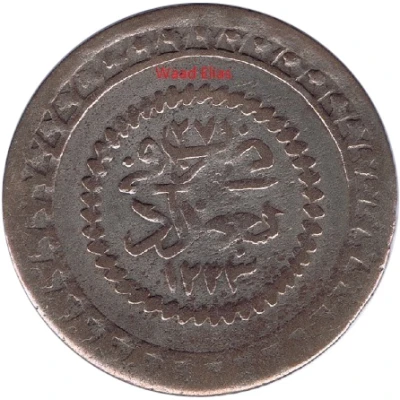


© Waad Elias
5 Piastres - Mahmud II
1223 (1808) year| Billon | 6.7 g | 36 mm |
| Issuer | Baghdad Eyalet (Iraq) |
|---|---|
| Sultan | Mahmud II (1808-1839) |
| Type | Standard circulation coin |
| Year | 1223 (1808) |
| Calendar | Islamic (Hijri) |
| Value | 5 Piastres |
| Currency | Kuruş (1688-1844) |
| Composition | Billon |
| Weight | 6.7 g |
| Diameter | 36 mm |
| Thickness | 1 mm |
| Shape | Round |
| Orientation | Medal alignment ↑↑ |
| Demonetized | Yes |
| Updated | 2024-10-05 |
| Numista | N#100128 |
|---|---|
| Rarity index | 89% |
Reverse
Regnal year, mint and date in center surrounded by an interior and exterior ornamental circle
Script: Arabic
Lettering:
٢٧
ضرب في
بغداد
١٢٢٣
Translation:
27
Struck in Baghdad
1223
Comment
Previously KM#78Weight varies: 5.50-6.90 g
Mint: Baghdad
Year 1223 / 26:
© Image courtesy of Waad Elias
Interesting fact
One interesting fact about the 5 Piastres - Mahmud II 1223 (1808) coin from Baghdad Eyalet (Iraq) is that it was made of Billon, a type of alloy that is composed of a mixture of metals, typically copper, silver, and sometimes gold. The use of Billon in coinage was common in the Ottoman Empire during the 19th century, as it was a more affordable alternative to pure silver or gold coins. Despite being made of a less valuable material, the coin still holds significant historical and cultural value, particularly for collectors and numismatists interested in the history of the Ottoman Empire and its currency.